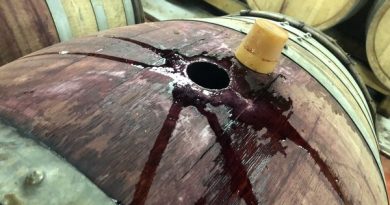Spigamonti, a new old grape in Valpolicella with distinctive features
Back in 2009 I did a tasting of some recovered grape varieties in Valpolicella. This is a region dominated by three grapes: Corvina, Corvinone and Rondinella. But in the past, before the phylloxera bottleneck, there were more varieties grown, many of which were lost when the vineyards were replanted. There’s interest in recovering these, and one of the interesting grapes that has been rediscovered is Spigamonti. Yesterday, I got to see it in the wild, at Tedeschi’s Maternigo vineyard, where they have a little bit.

I’ve seen a lot of vines, but Spigamonti sticks out as completely different. It has a red/copper tinge to the leaves, and the rachis of the flower clusters is a deep red colour. This is a teinturier, which means the berries are red fleshed, and it’s thought to be a very interesting blending component both for Valpolicella and also Amarone. I don’t know the genetics, but presumably some molecular switch that turns on anthocyanin production in the grape skins has been turned on not just in the pulp of the grapes, but throughout all the tissues of the vine.

I did some digging around. Spigamonti isn’t the principal name of the variety: in the Vitis database its primary name is Aspiran Bouschet, and it was bred in 1865 by Henri Bouschet in France, who also produced the famous teinturier Alicante Bouschet. It’s a cross between Aspiran Noir and Bouschet Gros.

It was discovered recently by a grower who sells grapes to Cantina Negrar, in a vineyard near Montecchio di Negrar. It’s not grown anywhere else in Italy. It was included in the Italian category of grape varieties in 2013.





